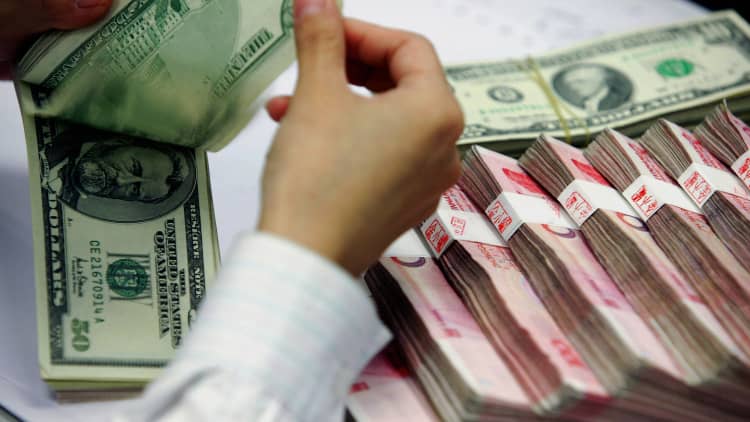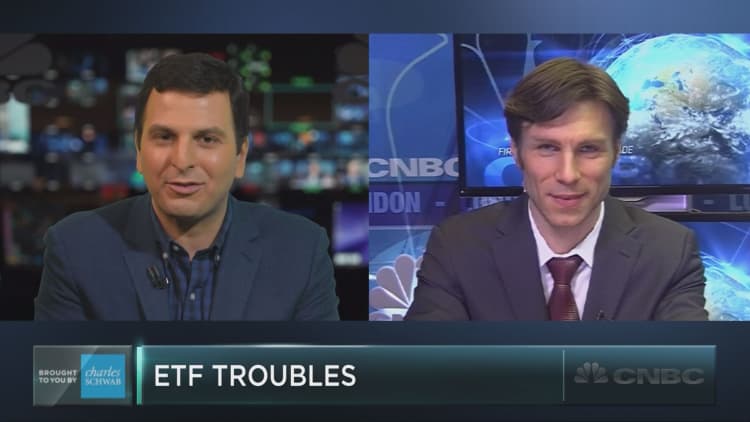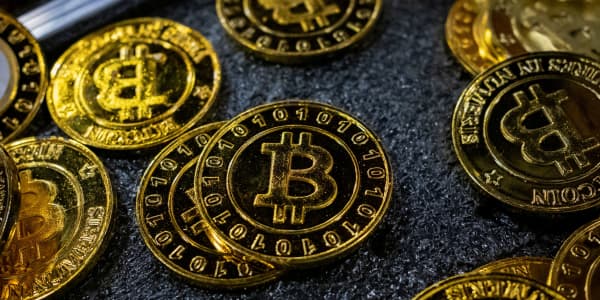Keeping an eye on market risk is extra important as you near retirement. A pension or Social Security check can certainly meet a portion of a retiree's financial needs, but it's exceedingly rare for them to fully replace the income of a full-time job. That's why savings and investments are important.
But many investors in or near retirement face a big challenge right now. They can't afford to pull out of stocks entirely — most investing experts now recommend keeping at least half of a portfolio remains in equities even in retirement — but income-seeking investors are right to fear a downturn in a bull market that is now more than seven years old.

Bond ETFs can help. With generally lower volatility compared to stocks, bonds have long held appeal to retirees seeking income, and bond ETFs are in many cases the least expensive options available. In fact, last year fixed-income ETFs enjoyed a record $92 billion in net inflows, according to CFRA. Here are four ways to incorporate bonds into a portfolio seeking additional income and less equity risk.
1. Go broad
For investors with a longer-term investment horizon, the first place to look within fixed-income is the most popular total bond market ETFs, including the Vanguard Total Bond Market ETF () and the iShares Core U.S. Aggregate Bond ETF (). These ETFs offer low fees, massive asset bases — important for liquidity and trading efficiency — and well-diversified exposure to the entire universe of investment grade bonds in the United States.
Take BND: It has $32 billion in assets and almost 18,000 holdings. It is one of the broadest ETFs an investor can hold and charges a minuscule 6 basis points annually, said Neena Mishra, director of ETF research at Zacks Investment Research. The iShares' option AGG has a similar investment profile and charges an even lower 5 basis points. It has about one-third of BND's holdings — 6,200 bonds.
2. Don't forget about inflation
One negative with BND and AGG is that both ETFs have outsized exposure to U.S. government and agency debt, keeping yields low, and making them susceptible to a rise in interest rates. "We know that inflation has finally starting rising after remaining muted for the past many years," Mishra said.
The Fed now seems ready to raise rates in March, barring unexpected, negative economic data.
To prepare for rising inflation, investors should consider adding Treasury inflation-protected securities (TIPS) ETFs to their core bond holdings, such as iShares 0-5 Year TIPS Bond ETF (STIP) or Vanguard Short-Term Inflation Protected Securities ETF (VTIP).
3. Include corporate bonds
Retirees in need of income should consider corporate bonds because, while riskier than government bonds, they are less risky than stocks. That is a happy medium for retirees.
Todd Rosenbluth, senior director of ETF and mutual fund research at CFRA, said the iShares iBoxx $ Investment Grade Corporate Bond Fund (LQD) is a good choice for a steady income stream. The fund offers diversified exposure to high-quality corporate bonds for a reasonable 15-basis-point annual fee. With more than $30 billion in assets under management, LQD is highly liquid and has returned 5.4 percent annually over the last decade. "These are companies that generate strong cash," Rosenbluth said.
More from ETF Strategist:
A stock market correction will have less to do with Trump than you think
Why Warren Buffett violates his only investing rule all the time
How to invest in bonds when time is running out
LQD only invests in bonds that mature in three years or more, which increases interest rate risk.
Mishra said investors with a shorter investment horizon should look at the Vanguard Intermediate-Term Corporate Bond ETF (VCIT). It also has a low fee of 7 basis points, and the focus on intermediate term bonds results in lower interest-rate sensitivity.
Rosenbluth pointed to the Vanguard Short-Term Bond ETF (BSV), which tracks investment-grade corporate and international bonds as well as U.S. government bonds with maturities of one to five years. It charges 9 basis points annually. "Fees are extremely important in general, but when rates may go up, it matters even more."
Bond ETF breakdown
| ETF | Annual fee (%) | Annual yield (%) | 1-year return (%) |
|---|---|---|---|
| Vanguard Total Bond Market | 0.06 | 2.45 | 1.08 |
| iShares Core U.S. Aggregate Bond | 0.05 | 2.37 | 0.84 |
| iShares iBoxx $ Investment Grade Corporate Bond | 0.15 | 3.3 | 5.7 |
| Vanguard Intermediate-Term Corporate Bond | 0.07 | 3.25 | 4.55 |
| Vanguard Short-Term Bond ETF | 0.09 | 1.48 | 0.64 |
| SPDR DoubleLine Total Return Tactical ETF | 0.55 | 3.1 | 2.6 |
Source: Morningstar.com (3/3/17)
4. Consider going active in fixed income
ETF experts generally focus on the benefits of low-cost, passively managed funds. But there is a case to be made for actively managed bond funds, "particularly in the current scenario," Mishra said.
Investors may want to consider the SPDR DoubleLine Total Return Tactical ETF (TOTL) managed by a team led by famed bond investor Jeff Gundlach of DoubleLine Capital. The expense ratio is very high compared to the core bond index ETFs above, at 55 basis points, but Mishra said that is reasonable for an actively managed fund.
TOTL has amassed $3.2 billion since launching two years ago and invests in a global array of long-only bonds. It has returned 2.6 percent over the past year and has an annual yield of 3.1 percent. TOTL does include international and high-yield (junk) bonds, but they do not make up the bulk of its holdings. Currently, TOTL has 90 percent of its exposure in the U.S. market. Emerging markets and high-yield bonds are less than 10 percent of TOTL, but it has the ability to increase that. Fifty percent of the ETF is invested specifically in the mortgage-backed market right now.

"The role of a bond fund is to add stability and capital preservation to a portfolio," Rosenbluth said. "The volatility you'd get with ETFs dedicated to high-yield and international bonds may not be appealing to retirees."
However, he added that broad ETFs such as TOTL mitigate risk through diversification. It has 615 holdings.
TOTL's recent performance has not set it apart from the less expensive bond ETF options. But Mishra said the rising rates and inflation scenario make it more attractive. Sector allocation, security selection, duration management and yield curve positioning will become important in this environment.
"I think TOTL is worth a look," Mishra said.
The multi-sector nature of this active fund means investors do need to look inside the hood at holdings and concentrations on a regular basis, Rosenbluth said. And higher fees are a bigger issue amid low yields. But he still recommends it as an active alternative. "Investors continue to seek out active management with fixed income and we think this is a strong ETF alternative. It offers additional bond sector diversification than just investment grade corporate or government bonds."
There are bond ETFs ranging from very conservative to a focus on volatile emerging markets. The crux of the problem for many income-seeking investors is finding the right balance of safety and yield.
"Anything safe may not pay enough yield. Anything that pays enough yield may not be as safe. Don't throw your risk aversion away to get more yield," said Mitch Goldberg, president of investment advisory firm ClientFirst Strategy.
Retirees could certainly hold some high-yield and emerging market bonds, just not a lot, Goldberg said. He pointed out that taking on a little risk in pursuit of returns can help a portfolio, overall. This is especially true for younger retirees, who have a longer timeline to weather volatility. As an example, a 64-year-old statistically faces more inflation risk than an 84-year-old.
— By Joe D'Allegro, special to CNBC.com
Watch: Hidden problems with ETFs





